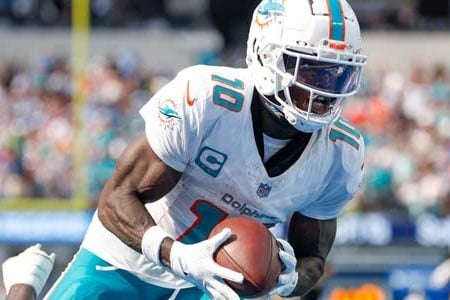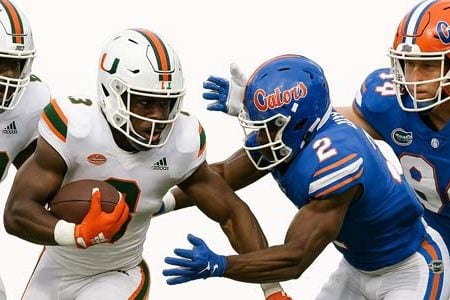Fans, analysts, and casual observers compare and discuss matches based on sportsbook lines. A reputable Texas sportsbook can affect more than just the outcome of bets; it can guide the commentary of broadcasters, the narratives of columnists, and the understanding of shifts of momentum by fans. The part odds, point spreads, and totals play are fundamental in shaping the expectations surrounding the narrative betting on sporting events.
This FAQ examines outstanding lines sportsbooks commonly engage with, coupled with the line’s relevance to commentary and analysis, along with the effects highlighted. The questions are organized chronologically and progress from fundamentals to more complex items. For instance, you learn how lines are set, why they move, the level of discussions around the line, and what technologies make it possible. The responses provided below are succinct, informative, and helpful. They are crafted for the benefit of the experienced wagerers, consumers of the sports media industry, or those trying to grasp the impact of narratives supplying odds.
Basics and Foundations
What are sportsbook lines and why do they matter in sports commentary?
The analytics behind a sportsbook line are prognostications of results communicated in the form of spreads, totals, or moneylines. Lines are important benchmarks used by commentators and analysts in the discussion on performance. For instance, if a team is favored by 7 points but is losing at halftime, that scenario becomes part of the discussion. Lines help discuss things that stats alone cannot and help set a premise before the start of the game.
How are lines different from expert predictions or fan opinions?
The sources originate with oddsmakers who reconcile algorithmic schemas with market activity. Unlike fan forecasts, which are often subjective, and pundit combinations, which range in index, sportsbook lines are anchored on facts and capital injection. Analysis often juxtaposes and correlates expert predictions and these data points, which generates tension and story interest. Lines serve a purpose as a focal point in sports discourse.
Why do media outlets reference sportsbook lines so frequently?
Lines serve to quickly provide a shorthand for expectations. “Team A is a 3-point favorite” is far simpler compared to an exhaustive statistical analysis. Journalists increasingly use them as fan familiarity is commonplace. In Texas, where lines are a common topic discussed on sports radio and podcasts, they often provide the structure for pregame shows and outline the stakes involved.
Do sportsbook lines influence how fans view a game?
Yes, a casual fan isn’t likely to understand advanced statistics, but even at that level, expectations start before a kickoff. Heavy betting favorabilities do create a shift in perceived upsets, drama, and how a win is celebrated, even if subdued. This, in turn, modifies fan discourse, which cycles back into the news.
- Understanding the basics of lines gives you more clarity when following commentary. With MyBookie, you can track how analysts interpret odds in real time and use that perspective to deepen your own insights.
Common Issues and Misunderstandings
What if lines seem inconsistent across different sportsbooks?
Slight discrepancies are normal because every book balances risk differently. Why do these discrepancies exist? What are they analyzing that bookers and the markets do not? For the subscribers, the point is to stick to one platform to track all the commentary.
How do commentators explain sudden shifts in odds?
They tend to explain them as news flashes—injuries, alterations to the team, or sudden surges in bets placed. Commentary presents these changes as a window into why expectations shift. The goal is to ensure the audience is aware of the reasons stories might change as well.
How do fans avoid misinterpreting lines in commentary?
It is most effective to consider lines as benchmarks rather than predictions. A team failing to cover does not mean they played poorly; rather, the performance simply varied relative to the expectations. Judicious consumption of commentary is the need to balance probability discussions with other commentary.
Why do some analysts say lines “don’t tell the full story”?
Because odds reflect probabilities, not certainties. Analysts use lines as a guide but add context with film study, stats, and matchups. This tension between numbers and deeper analysis makes sports talk more engaging. It’s also where fans can form their own Texas sports betting strategy to interpret beyond the odds.
- Increased clarity reduces the possibility of misunderstanding lines that shift for unknown reasons. MyBookie gives frequent, uncomplicated updates while reporting commentary so that you do not have to wonder about what the odds actually are.
How Lines Are Made and Used
Who sets the initial sportsbook lines?
Bookmakers set the first lines, referred to as the opening lines, by using models underpinned by history, data, player performance, injuries, and matchups. All lines set for betting are considered betting odds. Bets placed will then subsequently revise these numbers based on the predictions and values set by the experts.
How do analysts interpret line movement?
As far as point spreads are concerned, if a shift in line is accompanied by a report on sharp bettors coming into play, the signal is interchangeable with a line movement assertion. A line shift, an alteration of a previously established point spread, is a phenomenon explained by a given factor or combination of factors. Broadcasters like to report the shift in line. In an instance, if the point spread on the Cowboys moves from periods -3 to -6 overnight, sharp wagerers will be said to have been targeted.
How do lines affect pregame commentary?
In comparing team strengths in pregame shows, analysts may frame the line as something a team has to “cover” to prove legitimacy or scream that the line “overlooks” a much stronger defense. Such rationales allow commentary to extend to fans within their reach, not to mention fans who vigorously follow the odds.
How are over/under totals used in broadcasts?
Totals allow analysts to suggest a game pace. If the total is 50, the score is 21-20 at halftime, and analysts say the game is poised to exceed expectations, they’re not really helping. The commentary is much richer, and the game is beyond the halfway mark as a numeric figure aligned to the craft.
- Knowing how lines move and why they’re mentioned gives you an edge in understanding commentary. MyBookie lets you monitor these shifts alongside real-time media chatter, making analysis more actionable.
Deeper Insights and Applications
How do analysts use historical line data in commentary?
The trends are illustrated with previous spreads and outcomes. If ‘The Cowboys’ time and time again do not cover the spread when favored by more than a touchdown, that fact becomes part of the conversation. Historical line data adds depth to media narratives and fan discussions.
Do sportsbooks lines influence power rankings or team narratives?
Indirectly, yes. If a team can continue covering the spreads or exceeding the totals, commentators consider it a sign of the team being underestimated and therefore, not getting enough credit. In the same way, teams that do not perform to the expected level again become the focus, but these are framed as underachievers. Lines guide those decisions.
How does line analysis differ between local and national coverage?
When doing local coverage, much more attention is paid to how lines impact popular Texas teams, centering on emotional and local considerations. National broadcasts pay attention to much wider, league-wide trends. Both use lines as reference points, but the context is different in relation to the audience.
Can sportsbook lines predict commentary themes before a game?
More often than not, yes. If a line is heavily skewed to one side, analysts will most likely discuss whether the underdog has a chance. If the total is high, expect discussion about offensive prowess. Lines predict not only the betting but the entire spectrum of pregame conversations.
- By exploring advanced uses of line data, you can anticipate commentary angles before they air. MyBookie helps connect the dots, giving you foresight into how analysts will frame key storylines.
Behind the Numbers
How Texas sportsbooks adjust odds during live betting games?
They recalculate odds after every major play using probability models. A touchdown, turnover, or injury triggers instant updates. Broadcasters often mention these changes, showing how the game situation alters expectations. For example, if the Mavericks were down 10 but go on a scoring run, Texas sportsbook live odds shorten to reflect their stronger chance. Analysts use this to reinforce narratives about momentum.
How do sportsbooks use data to set lines?
Incorporating team stats, player metrics, historical contexts, weather, and even intricacies of referee behavior, these predictions made by the systems hugely sophisticated by machine learning techniques, are still finalized by human oddsmakers. Such “data lines” work as anchors for both bettors and analysts, ensuring that commentary remains relevant and well-grounded.
How are live betting odds generated so quickly?
With play-by-play inputs, the algorithms change the odds. For instance, when a quarterback throws an interception, the machine re-evaluates the win probabilities and alters the line. These adjustments facilitate the in-game commentary, as they allow broadcasters the opportunity to emphasize the changes in a matter of seconds.
Do sportsbooks use different data for Texas teams?
No. There is metric uniformity across all teams. Yet public betting may focus disproportionately on certain teams like the Cowboys or Longhorns. That attention might move lines more than the raw data would show, providing analysts with more material to discuss regarding public sentiment.
- Having a grasp on the technical element allows you to follow the statistics and the commentary with certainty. For instance, MyBookie allows you to link the mechanics of line setting to actual discussions generated around a game with ease.
Related Resources
For more depth, check out additional resources that explain how odds shape media narratives and fan expectations. Internal blogs can explore line-setting mechanics and the psychology of betting markets. External authorities like ESPN Chalk and academic studies on sports analytics provide reliable context. Podcasts featuring oddsmakers also give insider perspectives on how numbers translate to commentary. Use these resources responsibly, and always remember to balance interest with moderation. Gambling carries risk—stay informed and gamble responsibly.
Your Questions Answered — Your Success Starts Here
Sportsbook lines aren’t just numbers on a screen. They’re part of the language that shapes how games are discussed, debated, and remembered. By understanding how lines influence commentary, you can follow sports media with sharper insight and anticipate the narratives that dominate headlines.
MyBookie gives you tools to connect lines directly to real-world analysis. Track odds, monitor shifts, and see how media voices respond in real time. Use that clarity to deepen your engagement with games, sharpen your knowledge, and enjoy sports talk with more confidence. Responsible play always comes first, but informed understanding is what makes the experience rewarding.











